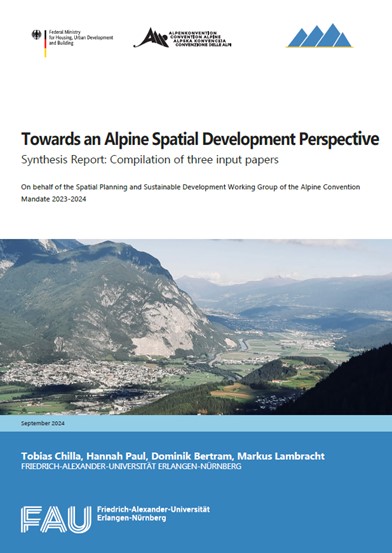A new report by Tobias Chilla, Hannah Paul, Dominik Bertram and Markus Lambracht brings together important arguments towards an Alpine Spatial Development Perspective (ASDP). This synthesis report brings together three input papers focusing on sectoral perspectives, namely transport & connectivity, green infrastructure and economic development. This process was initiated by the Spatial Planning and Sustainable Development Working Group of the Alpine Convention.
The document summarises the state of the art in literature and project reports.
The pan-Alpine level brings together eight countries, including more federal or centralized systems, EU and non-EU countries, and large and small states. All these countries are organized in a multi-level way, including regional, local and European levels. Further, spatial planning and development must be distinguished. Formal and legally binding planning is mostly assigned to the local and regional level. Spatial development functions in a ‚softer‘ way. Strategic plans, funding programs and governance processes play an important role. Both planning and development have the task of coordinating sectoral policies and dynamics from a spatial perspective, and vice versa, spatial planning and development are strongly influenced by sectoral dynamics.
In the coming years, the ASDP will position and develop the different elements towards a common (spatial) vision, including thematic, geographical and procedural aspects. the sectoral perspectives must be completed in the next steps and an integrated reflection must provide a cross-sectoral vision. The spatial dimension of sustainable development implies the promotion of a cross-sectoral and transboundary approach, which is a key element in achieving harmonious sustainable development.
For the ASDP background, see the publication by Meltzian 2024.
More publications in cooperation with the SDSP Working Group:
- Climate scenarios: linking climate change and spatial planning
- Assessment study: Cross-border spatial development in the Alpine Convention area
- Land take in the Alpine region: the data perspective
- 9th Report on the State of the Alps: Alpine Towns

